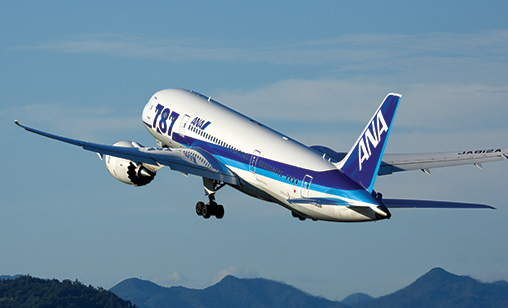Year End Review: Overview
THE GOOD NEWS IS COMING
December 1st 2014
Until the final months the year, 2014 was not substantially different from the previous twelve months for the region’s extremely competitive airlines. The main issues were over-capacity – producing low yields and a flat trajectory for Asia-Pacific air cargo. Read More »
Airlines continued to cement relationships with the right partners in the search for more business in the world’s fastest growing passenger market. They were reaping the benefits of aircraft, tho often delayed in delivery and with faults (e.g. lithium battery malfunctions), that are more fuel efficient and fly further.
 |
At the same time, they had to manage the challenges of countries in political conflict, regions of economic weakness, wide currency fluctuations and demands for better security and safety systems after MH370 exposed gaps in the world’s current aircraft tracking system.
Then two non-predictive factors entered the profit forecast equation. In the last quarter of the year, the air freight recovery demonstrated it truly had legs and the oil price dropped to its lowest level in four years.
At press time, the International Air Transport Association (IATA) said consumers will benefit substantially from oil’s near 40% price collapse in the past six months, with an average of 5.1% cheaper fares and lower cargo rates.
IATA said Asia-Pacific carriers should improve on their forecast 2014 year profit of US$3.5 billion by US$1.5 billion in 2015. The general global recovery and some strengthening in the region’s critically important cargo sector will drive this moderate improvement, IATA said.
In the meantime, the performance of Asia-Pacific airlines has been patchy, with the exception of a few full-service carriers, a clutch of budget airlines and the expansionary behemoth known as the Gulf airlines reporting substantial profits during the year.
Air New Zealand, reported an annual profit of US$262 million for its June 30 fiscal year. In Hong Kong, Cathay Pacific Airways announced a US$45 million profit for the 12 months to March 31 and both Japan Airlines and innovative All Nippon Airways reported profits.
Most of the region’s low-cost carriers (LCCs) announced bad news, usually substantial losses, to their shareholders, often for the first time since 2008. Among the losers were AirAsia X, the long-haul arm of Malaysia’s AirAsia Group, the repositioned Tigerair group, most of the Qantas Group’s Jetstar subsidiaries, Air India and all of India’s LLCs except successful Indigo, Thailand’s NokAir, budget carriers associated with the Lion Air Group and Citilink, Garuda Indonesia’s low-fare arm.
Some other airlines continued their terminal decline: Merpati Nusantara Airlines has not flown since February and the shareholders of India’s grounded Kingfisher Airlines owe more than US$1 billion to creditors, including aircraft manufacturers and lessors.
However Qantas, after reporting a net full year loss, to June 30, of more than US$2 billion, appears to be on the mend, with CEO Alan Joyce’s December announcement that the flag carrier is on track to report an interim profit of between US$260 million and US$300 million.
In this improved but highly volatile environment, India’s civil aviation authorities have approved applications for six airlines: full service carriers Air One and Premier Air and LCCs Zexus Air, Turbo Megha, Air Carnival and Zav Airways. Approval earlier in the year was granted to the Tata-Singapore Airlines joint venture, full-service carrier Vistara.
In December, Airbus forecast China will become the world’s No. 1 domestic market in the next decade and that the country will need 5,300 new airplanes, or 17% of the global market, by 2033. At the beginning of 2014, there were 47 LCCs flyng in the Asia-Pacific. By the end of the December, the budget fleet is set to hit 60 airlines.
Against this dynamic background, airlines have seen the work of IATA, ICAO, the AAPA and CANSO make significant progress towards achieving carbon neutral growth by 2020 and imbedding better systems for tracking, travel security, safety and in-cabin communications.
Airbus has introduced the revolutionary A350XWB to the world, the A330neo will be built and the B787-9 has received positive acclamation, including from launch airline, Air New Zealand. Not a bad year at all.